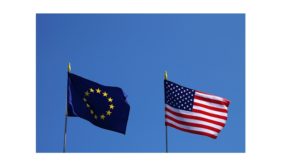 Many experts are predicting 2016 will be the year of APIs and integration for the events industry. The concept has been around for a while but is gaining momentum as more and more organisations see the benefits of integrating their event data with other systems. If you’ve already worked with APIs, then you know why they are important. But some of us may well be wondering: What are APIs and why should I care about them?
Many experts are predicting 2016 will be the year of APIs and integration for the events industry. The concept has been around for a while but is gaining momentum as more and more organisations see the benefits of integrating their event data with other systems. If you’ve already worked with APIs, then you know why they are important. But some of us may well be wondering: What are APIs and why should I care about them?
Simply put, an API – or Application Programming Interface – is a way for two pieces of software to talk to each other and exchange information. For example, when making a purchase online, the website sends your credit/debit card information through an API to another application, which confirms that the details you have provided are correct. You can think of it as a piece of software that functions as a door or window, if you want. From the perspective of an event planner, it’s the mechanism that allows your event management system to share data with your event app. Or it’s what allows your registration software to share delegate details with your Salesforce.com CRM system. Or even payment confirmations to your finance package.
Top 5 Considerations When Dealing with APIs
Integrating your event management software with other business systems within your organisation will bring you a host of benefits (see our blog post: Why is Integration So Important for Your Events). A well designed event app, for example, is one that integrates with your event management system to offer real-time accurate content, not just during the event, but before and after as well. Central to this design is figuring out which systems needs to talk to each other, which fields within the app need to be updated and how often this needs to be done. And this is where APIs come in.
1) Putting the Right Data in the Right Place
When integrating your event management system with other applications, you need to decide how the API will pull and share information between the two systems. So if you’re integrating your registration software with the Salesforce.com CRM solution, you should decide which questions from your registration page (names, address, telephone numbers) should be updated in Salesforce and vice versa. This ‘field mapping’ process is important as it ensures that the right data goes into the right field of each system. So your event app, for example, may use ‘preferred names’ for addressing delegates but your event registration system records first, last and preferred names. By mapping the ‘preferred’ name field between the two systems, the API ensures that the app addresses the delegate as his preferred name ‘Johnny’ – instead of his full name, John Smith.
2) Choosing the Direction of Your Data Flow
The next thing you need to decide is whether this sharing of information is a one or two-way process. With event apps, the flow of information is usually one way where data from the event management system – like event agendas and delegate schedules – is pushed into the event app. With CRM, finance or membership systems, it makes more sense to synch data in both directions. So you’ll be able pull invitations lists from your Salesforce directly into your event management system – similarly, any changes to a delegate’s profile will automatically be updated in Salesforce.
3) How Much of Your Data Should You Share?
Another thing to consider around your API is the filtering of your event data. By default, your API may expose all your data to the integrated systems. Your finance team, for example, may want access to all your event data but your event app may only need access to data around one particular event. You may want to create one app for your exhibitors and another for your delegates – by setting the right filters within your API, you can make sure that only relevant event data gets shared with your other integrated systems.
4) How Often Should You Synch Your Systems?
This is an important question that can determine your API ‘pipeline’. Mobile apps, for example, consume a lot of data from event management systems, especially on the day of the event. That data needs to be constantly refreshed to ensure delegates have access to up-to-date information around the event. Finance or CRM packages, on the other hand, have a low but constant usage of event data. Data synching in this case can be set for once a day. Your event tech API provider may charge you for the amount of data you are consuming between your different systems or they limit the amount of data you are running through your API – so make sure you choose one that won’t limit your data use.
5) Determining Data Access & Security
Once you have decided which systems to integrate with your event management solution and set the parameters of your API, you (or your system administrator) can obtain an API key – often used instead of usernames and passwords. This key is one way of enabling integration by providing your event app and other third party applications access to your event data, and vice-versa. It comes in the form of a computer-generated password that can be revoked (changed) if lost or compromised. If you don’t revoke it, your event data is vulnerable as it is left exposed to anyone who has access to this key.
Make sure you know who has access to your API key and try and limit the numbers. When you do need to share it with other technology suppliers (like an event app provider), do so by phone instead of email, as it’s more secure. Also, if you’re integrating with more than one system, make sure you have separate API keys for each integration. This way, if one of your API keys gets lost or exposed, you can revoke the key (which disables the integration) and set up a new one. If you have one API key for all your integrations, then you break all the integrations at the same time, which can result in some costly downtime until you’ve sorted it all out.
Conclusion
 Taking time to make these key decisions around your APIs will determine the success of your integration. While most event tech vendors provide APIs for their software, many also have established partnerships and API integration capabilities with tried and tested software solutions (Salesforce.com, Sage, Insight Mobile). This is helpful as you’ll be able to get things up and running without investing the time and money into any coding work that allows data to be pulled from one system to another. And if these API relationships don’t exist, there’s no need to reinvent the wheel. By making sure your suppliers can provide you with the necessary advice, recommendations and workflows for integration means the whole process can take as little as a few days at a fraction of the cost.
Taking time to make these key decisions around your APIs will determine the success of your integration. While most event tech vendors provide APIs for their software, many also have established partnerships and API integration capabilities with tried and tested software solutions (Salesforce.com, Sage, Insight Mobile). This is helpful as you’ll be able to get things up and running without investing the time and money into any coding work that allows data to be pulled from one system to another. And if these API relationships don’t exist, there’s no need to reinvent the wheel. By making sure your suppliers can provide you with the necessary advice, recommendations and workflows for integration means the whole process can take as little as a few days at a fraction of the cost.
Get to know Eventsforce’s integration and API system, plus how it can unlock the true value of your event data, by clicking here.
Written by Paul Harris, Eventsforce









